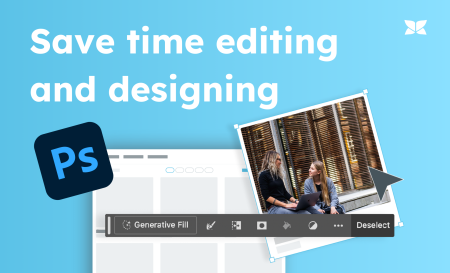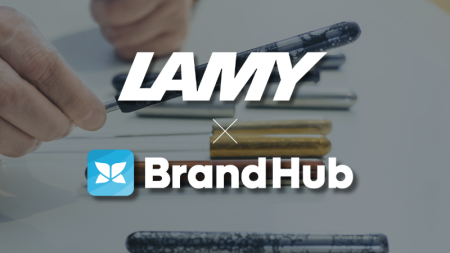Companies that manufacture many products and sell them already face major challenges in creating the visual assets - more and more photos of the same product are needed, plus movies.
In a past post, we explained how to get the assets into the TESSA DAM as efficiently as possible, thereby easing the burden on companies. Once the data is in the DAM, it should of course be passed on to different channels. To do this, the assets need to have different properties - they may need to be transformed. For example, if you want to produce a catalog, fine data should be delivered as high-resolution JPEGs or TIFFs in CMYK - or, if working with Pantone, also in these colors. You may be saying to yourself that this is not a problem because that is how the images are packed into the Tessa DAM. That's fine and good. But what do you do when new requirements are added, the data is also needed on your company's website? - Without asset management, you're forced to convert possibly five, ten, or even 30,000 images in Photoshop. That's no fun at all and will tie up your hardware for many, many hours. We know customers who have historically run many machines in parallel to get conversion work done in a reasonable amount of time.
Provide the formats you need with a DAM system
It is much more convenient if a server does this work in the background. Then you can not only cleanly supply your website with the assets in the required format, but also all other target systems of your company. Whether that is your website, the website of cooperation partners, wholesalers, marketplaces, internal systems such as ERPs or CRMs - all can get the asset material from the TESSA DAM in the form in which it is required. This is a huge competitive advantage over competitors who only provide data as standard and where the customer is expected to do the work. To do this, of course, you need to know the requirements of the customer and internal stakeholders. Then you can easily solve the task with TESSA Channels - and if it is something special that is requested, we are happy to support and try to implement every wish. If it gets more complicated, we can also use a specific converter or combine assets in a rule-based way.
Dimensions of digital asset manipulation
Basically, our customers usually want the following manipulations:
- Workspace size & -colour
This defines the length and width of the workspace on which the photo will be placed. This way you can determine distances from the edge. If the working area is 1,000*1,000 pixels and the picture is placed on it with 900*900 pixels centred, there will be a border of 100 pixels all around. Of course, you can also define the colour of the workspace. - Image size
This determines how many pixels the image you want to place on the canvas has. Length and width must not exceed the dimensions of the workspace, otherwise you will cut something off. - Dot/pixel density (dpi)
Clients always want high-resolution images. For this, you still have to ask the customers how many centimetres edge length the material should have: postcard, A4 or A0 already have very different amounts of data in the result. For material that is to be shown online, this is 72 dpi, and if it is to be high-gloss images, the required dot density is 300 dpi. - Colour space & colour profiles
It is certainly no longer as tragic as it was some time ago to send the additive concept of RGB to the printing press or to display the subtractive concept of CMYK on the screen - nevertheless it should be the other way round in order to display the colours as true and as intended as possible. The colour spaces of RGB and CMYK are also not congruent, which is why there are colour profiles for the conversion that help with this and that you can use. These are exactly the features of the TESSA DAM. - File format
Especially with photos, there are different requirements depending on the intended use. If a transparent background is required and the image is to be displayed in the browser, then GIF and PNG are possible. With GIF, the number of colours is limited. Therefore, one could choose PNG. Unfortunately, the amount of data is larger than with JPEG. However, if the object in the photo is to be surrounded by the background colour of the website, it may be more efficient to adjust the background colour in the JPEG. You can select the most effective file format in TESSA DAM for specific usage contexts. - Watermark
Our customers often want to place brand logos or watermarks on photos to make the brand clear and to make misuse more difficult. You can also freely select and set the position in TESSA DAM.
With these main dimensions of asset manipulation, you will be able to fulfil the absolute majority of requirements on your own. You apply the channels to an assortment of your assets and then make them available in the desired manner. These clients or colleagues will be thrilled.
Using these main dimensions of asset manipulation, you will be able to fulfil the absolute majority of requirements on your own. You apply the channels to an assortment of your assets and then make them available in the desired manner. These clients or colleagues will be thrilled.
Media adapted for efficient data distribution
Ultimately, it is a matter of applying these channels to the assortments that you reject. This can be done in totally different ways. It can be a ZIP file that a customer downloads, it can be an FTP directory - or we make the assets available via a link. This can be a link to a CDN like Cloudflare, for example, which can be integrated directly into a website. We will explain exactly how this works in a later post.
Conclusion
One asset for all needs
You save a photo once and deliver it in the form you need. It doesn't matter whether you manipulate the workspace, image size, pixel density (dpi), color space or color profiles, file format, or add watermarks and text. Everything is individually configurable in Channels, saves time and pleases your customers. It doesn't matter whether the data is to be integrated into a catalog afterwards, accessed via a CDN or stored on an FTP server. This and much more is possible.








